The purpose of this paper is to explore what the future of Masonry might be. It will focus on an optimistic future as opposed to a dystopian future.
Rather than a narrow view of Masonry, limited to one particular type, this paper will look at Masonry in its broadest sense.
No specific timeframe has been proposed for this paper, but generally, it is based on a subsequent generation.
Attempting to foretell the future is a doomed enterprise if one is looking for accuracy and certainty; however, general themes can be anticipated.

IMAGE: The Square Magazine Digital Collection
One Possible Future Environment
If one takes an optimistic view of current trends, there could be inferred a potential future where long periods of labour are unlikely.
This relates to the continual improvement in the use of robotics for manufacturing, some service jobs, and other ideas like self-driving vehicles.
Add in the use of machine learning and artificial intelligence and the possibility of a world where people work few hours cold be possible.
Of course, this isn’t the only scenario, and it is possible that rather than the “Jetsons” the world could resemble “Terminator”. [2]
The more positive future is what is anticipated for this paper.
This optimistic future could be known as the Age of Leisure and those who can experience it might experience what could be known as the Leisure Class.
Rather than being reserved for a few, very wealthy and privileged elite, perhaps the vast majority would have to work very little.
Work, itself, might be something people look forward to, a chance to interact with others, and a chance to “do something”.
One of the key issues of this Age will be deciding on what to do with one’s time. A related issue would be establishing and maintaining meaningful relationships when one doesn’t work closely with others on a daily basis.
Without work to provide meaning and social interaction, how will people cope?

IMAGE: The Square Magazine Digital Collection
The Fraternity as a Social Construct
During the nineteenth century, when there was a larger group of people that did not have to work for a living, called the Leisure Class by Thorstein Veblen [3], there was a rise in private clubs and fraternities, including Masonry.
This was also matched by the growth of benefits societies and other social groups peopled by the working and middle classes.
There were some practical purposes of these organizations (for example to provide funds for a proper burial) but for the most part they were designed to provide a place for people to socialize.
During this period there was limited entertainment to be found a home, many homes were small and crowded, and outside entertainment wasn’t prevalent or affordable.
Some of the activities that people could partake in were public executions, cock fights, bare-knuckle fights, and drinking.
In fact, there were grave concerns raised about the consumption of alcohol during this period.
Many things changed over the next centuries and total there are no lack of entertainments available to individuals, especially at their homes or part of their ubiquitous smart phones. As people’s entertainment options have increased, their need for formal socialized settings have decreased.
In addition, rather than prosperity bringing a relief to time pressures, the opposite has happened, and most people work longer days, both parents generally work, and activities for children are more formal and time consuming.
Additionally, many people now must commute for much longer in order to afford to have the type of home they want. These factors have dealt a serious blow to all social organizations.
If the time impact of work is reduced, however, then the situation changes. There will still be many forms of entertainment available for those who now work fewer hours.
In fact, the very things that will allow for less work time will actually increase entertainment possibilities. Some of this entertainment might allow for social interaction but much of it will still be done individually. For many people, there would be a limit to how much Netflix they could watch or kitten videos they could share.
People will be looking for social interaction and maybe some form of intellectual stimulation and learning.
As leisure increases, social organizations will expand and increase. These will include athletic and health clubs, formal and informal activity clubs (like bowling, darts, sewing, stamp collecting), groups based on common beliefs (like Greenpeace, churches, Free Tibet), charitable and social welfare groups (like Rotary, Red Cross, search and rescue), purely social groups (like Oddfellows, Masonry, Elks), as well as educational groups and activities.
Some people will be drawn to a single social organization, while others will be part of multiple groups.
Masonry, in this situation, would be poised to become more important and with more members.
It provides a social atmosphere as well as an opportunity for intellectual stimulation. It has a charitable aspect to it as well as caring about its members and their families. It has structure and history.
It is found around the world. There are many different ‘hooks’ that could be used to attract and retain members; Masonry can appeal to many different aspects of its members.
In this future, Masonry will likely look different. Different doesn’t necessarily mean ‘better’ or ‘worse’. There will be many opportunities that the Craft could take advantage of.
As its members have different interests and different personal circumstances, the Craft will not be uniform and there will be different approaches.
In fact, the one threat to the future of Masonry is the attempt to make it too standardized; that is, to attempt to overly control it.
The following section will outline some ideas on what Masonry might look like in the future, based on the concept of an Age of Leisure. Another paper will outline these ideas as a ‘day in the life of a future Mason’.
The ideas are not prescriptive and reflect options. Additionally, the term ‘Masonry’ has not been narrowly defined. It is not necessarily ‘your father’s Masonry’; it isn’t a mirror of the United Grand Lodge of England.
The ideas are not based on a segmented concept of specific individuals, specific beliefs, or sex. One way of presenting this is as a change from the motto of “Making Good Men Better” to “To assist enlightened individuals to better their inner selves”.

IMAGE: The Square Magazine Digital Collection
Elements of Future Masonry
The first major change to Masonry will be that of decentralization or at least a lessening of control.
Rather than seeing more focus on ‘grand organizations’, Masonry will generally be small groups of like-minded individuals who agree to follow the precepts of Masonry. They will control their own destinies and form, change and dissolve over time.
While their will be a role to play for larger organizations, it will be in promotion and education, not in control. Individual groups will join, voluntarily, one or more larger associations. Essentially, Masonry will be a confederation of groups.
Individual Masons will join (and leave) various groups, based on their personal interests, situations, and the friends they have made.
With access to so many Masonic opportunities, organizations attempting to exercise heavy-handed control will simply see their members changing affiliations.
Relating to decentralization, another major part of future Masonry will be its variety. Groups of Masons will decide what rituals they will use and study as well as how they interact.
With the entire world of Masonry available to them, groups will choose what their members value. One group may decide to use the Rectified Scottish Rite rituals for part of their activities but also conduct rituals from the Easter Star and the Royal Arch.
Groups will coalesce around specific rituals and systems even if they have access to ‘everything’. Individuals that are interested in rituals not part of their current group, will simply join another group that does conduct that work.
With the technology available, Masonry will have a hybrid character. That is, its social interactions will be conducted in-person and virtually, often at the same time. Following from this, Masonry will remove regional and national boundaries.
Notwithstanding language [4], a Mason might be participating with groups in many different locations. They could belong to one or more localized groups that they visit in person, but also belong to Lodges in other countries.
This will also mean that now the saying of “Masonry exists around the entire world” will be true, and it will always be “High Noon” and time for Masonry. Virtual interaction will continue to improve and have several channels of communication at the same time so that Masons can experience a richer social interaction.
Virtual meetings will not feel like sitting in front of a laptop in a basement. Having hybrid and international availability will reinforce the variety of Masonry as well as its confederate aspects.
The enabling change or technology that will arise in the future is a form of security; a replacement for the secrets of Masonry used to identify one another.
Using some form of decentralized system security, each mason will have a ‘passport’ or method of identifying who they are, to what groups they belong to, and what degrees they have received [5].
This system or passport will be used in both in-person and virtual meetings and will allow for groups to feel secure when they admit visitors. It will be trans-national and not within the control of any group or grand body.
It would also be used to provide mason-to-Mason communication, providing peace of mind. The system behind it would allow for a virtual ‘universe’ that was restricted to Masons. This could be a combination of the metaverse, Facebook, email, and messaging: true social media.

IMAGE: The Square Magazine Digital Collection
Conclusion
If one is optimistic about how technology will improve how our society functions, then the future might bring an Age of Leisure. While reducing the time pressures of work for people, it will also bring forward possible social isolation.
This pressure for socialization will see the resurgence of social organizations and with the advent of new technologies, the fabric of social organizations will exceed the scale found in the nineteenth century. “A rising tide floats all boats” [6] and with an increase in social organizations, Masonry will prosper as well. Prosper yes, but also change.
With changes in technology and individuals’ interests, Masonry will be more de-centralized and varied, and individual Masons will have more choices in their experiences. Technology will bring increases in security that will replace outdated attempts at Masonic secrecy and proofs of identification.
Technology will also empower Masons to have meaningful meetings and relationships in a in-person and virtual world. A Masonic Utopia might be created.
Footnotes
Reference
[1] This paper was part of a discussion held at a virtual meeting of the Northern Equinox Council UD about the future of Masonry with a focus on optimism.
[2] This is also a very “western” focus. Perhaps this bright future doesn’t exist in all places in the world.
[3] Thorstein Veblen The Theory of the Leisure Class (1899).
[4] Likely the rise of AI will assist in real-time language translation.
[5] Scott Wisdahl “Blockchain Masonry” The Architect, 2020 (Allied Masonic Degrees of Canada, 2020) p 232.
[6] A phrase attributed to President Kennedy it most likely first appeared in print in “Never Paralleled in New York” The [New York] Christian Advocate (January 20, 1910).
Article by: Scott Wisdahl
RWBro. Scott Wisdahl
Junior Warden, Fort St. John Masonic Lodge No. 131. Grand Lodge of BC & Yukon
Recent Articles: of current interest
 Keeping Passions and Prejudices within Due Bounds Master your emotions and find balance in a chaotic world with Darren Allatt's "Keeping Passions and Prejudices within Due Bounds." Discover practical strategies for self-awareness, emotional intelligence, and building meaningful relationships. Transform your life with calmness, clarity, and purpose. Start your journey towards emotional mastery today. |
 Masonry in the Age of Leisure - P2 Explore the optimistic future of Masonry in "Masonry in the Age of Leisure" by VVenBro Scott Wisdahl. Delve into the possibilities of a leisure-driven society where technology enhances social bonds, decentralizes the Craft, and reshapes Masonic traditions. Discover how Masonry can thrive in an interconnected, tech-savvy world. |
 Masonry in the Age of Leisure - P1 Embrace the future of Masonry in the Age of Leisure! Imagine an era where technology empowers deeper connections, offering a tapestry of diverse groups united by Freemasonry’s timeless values. Envision hybrid meetings transcending borders, fostering brotherhood across continents. This optimistic future cultivates intellectual growth and social interaction, heralding a Masonic renaissance for all. |
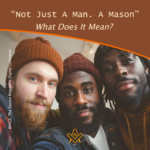 “Not Just A Man. A Mason”: What Does It Mean? Embrace the profound essence of Freemasonry, not merely a group but a journey of integrity, shaping men of dignity. By adopting virtues such as honesty, justice, and brotherly love, Freemasonry transcends time, urging us towards a dignified life. It’s more than being a man; it’s about living with unyielding dignity. |
 Multiculturism and the Culture of Freemasonry Freemasonry, with its deep roots in universal principles such as individual freedoms, education, and the pursuit of science, stands as a beacon of unity in a world divided by conflicting ideologies. By embracing the tenets of Freemasonry, including respect, peace, and mutual understanding, we can navigate societal challenges and foster a more harmonious world. |
 Embrace the new paradigm of eco-conscious living in the 21st century. Freemasonry, a cornerstone of society, must evolve, placing Nature at its heart. Reject anthropocentrism, embrace deep ecology, and champion sustainable living and global cooperation. Let Freemasonry lead by example, advocating for a world where humans and nature coexist harmoniously. |
 How Freemasonry Has Woven Itself into the Fabric of Society Like the weathered stones of an ancient temple, Freemasonry's origins are shrouded in mystery. This fraternal order has woven invisible threads throughout society's fabric since emerging in the 1600s. Despite declining membership, Freemasonry's influential legacy endures, seen in philanthropy, architecture, and the ideals of legendary members. Though facing challenges, revival remains possible if it adapts traditions to the modern era. |
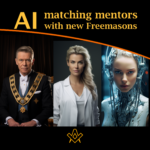 AI help in matching mentors with new Freemasons Harnessing AI for Freemasonry Mentorship: A Comparative Analysis. Freemasonry, an age-old fraternity, seeks to enhance its mentorship program by leveraging AI. While the Grand Master suggests detailed member profiles for matching, a Professional Coach emphasizes personality compatibility. Meanwhile, an AI Bot proposes machine learning for pattern recognition. Dive in to explore the potential and pitfalls of each approach. |
 Masonic Charities P.2 – The Shriners Discover the Shriners' legacy within Freemasonry; delve into their profound commitment to philanthropy and see how Masonic Charities demonstrate brotherly love, relief, and truth. Become inspired by the bonds that unite Shriners around the globe and their impactful work in local communities. |
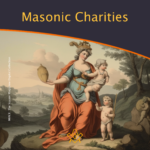 Freemasonry's commitment to charity has always been a priority and remains a core principle, reflecting its mission to promote brotherly love, relief, and truth in the world. Part 1 of the series gives an introduction to the establishment of the main Masonic Charitable endeavours in the 18th and 19th centuries and several key influencers. |
 Solomon Learning and Development Platform The Intersection of Freemasonry and Technology: Embracing the Digital Age with the New |
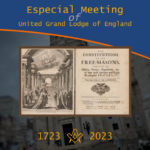 Especial Meeting of United Grand Lodge of England The year 2023 marks the tercentenary of the publication in London of the Constitutions of the Freemasons, based on Enlightenment principles that provide the philosophical foundations of modern Freemasonry. Why are the 1723 Constitutions important? Many Masonic histories have been concerned with ‘when’ and ‘what’. We also explore ‘why?’ |
 Like every other incident of initiation it is in the light of the larger meanings of Freemasonry that we must interpret the Rite of Destitution. But what does it mean? |
 Society of Grand Lodges in Alliance (SOGLIA) is a confederation of Grand Freemason Obediences in which all members obey the principles of Regularity. Assembled annually, in different places of the world, in order to share fellowship and to promote Masonic tradition, SOGLIA members are respecting the autonomy of each Grand Lodge. |
 Confederation of the Grand Lodges of Europe and the Mediterranean - Universal Freemasonry and its intellectual property are less and less taken into account in the current times of constant movement and unclear future prospects. |
 The Book of Law in Brazilian Freemasonry We are informed that, Freemasonry it is not a religion, but the candidate has a belief in a creative principle, which later, we call the Great Architect of the Universe. - by Fernando Rodrigues de Souza |
 Mike's Masonic Walks And Talks WBro. Mike Neville is a Masonic author and lecturer. He offers walks and talks primarily around London, based on his vast knowledge of the area and his specialist subjects, which cover all aspects of Masonic history. |
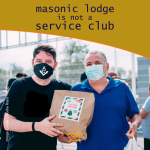 A Masonic lodge is not a service club An address delivered to the 10th Annual Conference of Western Canadian Grand Lodges (1950) in response to the question, "Should Our Western Grand Lodges Sponsor a Specific Program?" By |
 The Order of Bees was established as a youth initiative for the boys and girls of Prince Hall Freemasons, and symbolises the relationship existing between the activities of the youth and the family of bees. |
 The Confederación Masónica Interamericana (CMI) was founded in 1947, is a non-profit organization that groups together 92 Great Masonic Powers, admitted as members and distributed in 26 countries in South, Central, North, Caribbean and Europe. |
 This smartphone app is designed to work with all Freemasons from both Regular and Independent Grand Lodges around the world. |
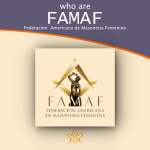 The American Federation of Feminine Freemasonry (FAMAF) is an organization that brings together Grand Lodges, Grand Orients and Confederations of Feminine Masonic Grand Lodges from the American continent. |
 The third largest Masonic Alliance of independent grand lodges, which currently has over 500,000 members in the world and an incredible resource of "good people with a good reputation" from around the world. |
 A Guiding Paw - my faithful 'brethren' A heart-warming story of one Mason's best friends – and how Gary's faithful guide dogs have helped fulfil both his Masonic life but also his valuable work in public service. |
 A visit to the Mother Lodge of Scotland Let me take you to the heart of Scotland to meet our Brethren of the Mother Lodge of Scotland, a journey into one of Freemasonry's deepest roots. Our guide Carlos Oliveira Santos who is from |
 An introduction to VEREINIGTE GROSSLOGEN von Deutschland / UNITED GRAND LODGES of Germany |
 International Masonic Union CATENA An international association of Grand Lodges and independent Lodges, with all true Masonic traditions, which adhere to the basic principles of the equal standing of men and women in Freemasonry |
 Social Impact of Prince Hall Freemasonry in D.C., 1825-1900. Alonza Tehuti Evans discusses Prince Hall Freemasonry, founded by African Americans. |
 Who are the Widows Sons, and what do they do, and how can you join ? |
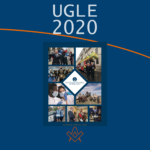 For the first time in its 300 year history UGLE has published an Annual Review |
 Founded in 1919 and named after the Grand Master of the Knights Templar, this International Order has helped young boys become great men. |
 9th International Conference of Freemasonry Hidden Meanings: Esotericism and Masonic Connections |
 An introduction to CLIPSAS and we look at who are they and what do they do |
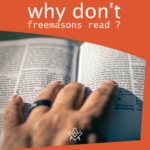 The title of this article will seem somewhat of an oxymoron, because at this precise moment you, most likely a Freemason, is reading this |
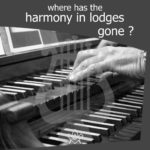 Music can make you either remember everything or forget everything! They even call it the 'rhythm' of life because life does have a beat, a rhythm, a song! Music is equally important for Freemasons. |
 Young Masons' Inter-Club Virtual Social An initiative was created to initially keep Brethren engaged in their Masonry whilst the restrictions of the COVID-19 pandemic are in place. |
 I've heard people say that we don't have heroes |
 What can we learn from Steve Jobs' address given at Stanford in 2005 |
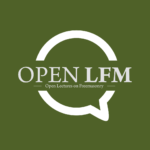 Open Lectures on Freemasonry as a series of monthly online lectures that aims to increase the visibility and accessibility of research into Freemasonry. The lectures are open to anyone who is interested. |
 What Kind of Library Do You Have? Many Brothers have no clue as to what kind of "Craft" library they actually have in their home or office. Most of these Brothers don’t care that they don't know – so, what kind of library do you have? |
 Russian Freemasonry a combination of a short sketch of its history and a review of the present-day Masonic landscape in this country |
 A brief outline showing the differences and similarities within Freemasonry |
masonic knowledge
to be a better citizen of the world
share the square with two brothers

click image to open email app on mobile device





